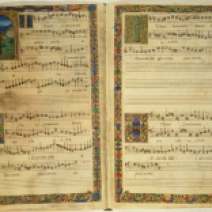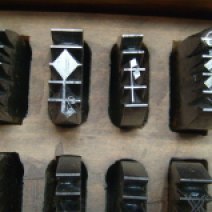Music Publishing and Distributing: Blog Post #3
In this third blog post of the series, I will explain the publication and distribution methods of the printed music market from two different geographical regions throughout the sixteenth and seventeenth centuries. This post will be written as if we were taking a trip to all of these various music markets to learn about each of them specifically. The first stop on our list is mid seventeenth century England and the publisher who was dominating this scene was John Playford. During the mid seventeenth century there were increasing amounts of music being created for amateur musicians. Playford was able to recognize that amateur musicians would make for the best clientele since their numbers and needs for music were rapidly increasing.[1] With this knowledge, Playford would begin to start marketing music towards amateur musicians. Playford ultimately developed the ingenious idea of promoting musical literacy as a way to build his clientele. He did this by promoting musical texts for the most common instruments of the time, including popular music of the time period, as well as basic instructions to help amateur musicians teach themselves.[2] Playford’s business was centered on a bookstore that he operated in London, where customers could come to shop and look for new music, meet other musicians to discuss ideas, and both purchase or be lent books. While his bookstore served as his main storefront, Playford’s house also served as a meeting place for amateur musicians like him, and these meetings were sure to include business advancements to some degree.[3] Although Playford was a major seller in seventeenth century England, music and book selling was not limited to London, as there were numerous shops and market stalls around the country.
In addition to London, both Oxford and Cambridge had university-publishing houses at this point in time which served as an outlet for musicians to purchase sheet music. Along with this, there is evidence that instrument sellers located throughout England sold music manuscripts in addition to instruments.[4] A trend that grew in prominence in the later years of the seventeenth century was for musicians to obtain music books from professional music teachers. Some teachers even began to compose their own works and market them for their students as a way of making additional income and a clever attempt to attract new clientele in order for their printed music to quickly spread their name. Many composers would sell their music books out of their homes, but the vast network of bookstores provided for faster and easier public exposure.[5] During this time, self publication was also an option, so many professional music teachers would self publish their compositions to market towards their students rather than have their works be published by a bookstore as part of a larger collection.
Going back specifically to John Playford, his business was responsible for the largest contribution of England’s musical publications between the years of 1650 and 1700; and while evidence of numerous editions and reprints of musical texts suggests a flourishing market, Playford’s target clientele was actually quite small compared to England’s population as a whole. Information points out that Playford’s main clientele were males and females of the upper class who had sufficient funds to purchase musical books, which would be considered lavish luxuries at the time. This brief look into John Playford and the printed music market of seventeenth century England is just a snapshot of the publishing, distributing, and even marketing techniques of one specific business, as well as an example of how these activities took place at this particular period in history.
The next brief snapshot of music publishing and distribution that we will take a look at is the sixteenth century Iberian Peninsula. In this geographical region, music publishing and printing was heavily dependent upon the abundance and availability of various resources. These resources included materials such as high quality paper, technology such as specialized music fonts for printing presses, and skilled workers with the ability to actually print books and music.[6] Due to the sparse availability of all of these resources, music books produced in the Iberian Peninsula during this time were considered a lavish commodity. As far as distribution went, this job was generally completed by the composer themselves, and as a result music books printed in the Iberian Peninsula were mostly contained within a niche local market until later years. As a result of the high cost and low availability of resources, a lot of sheet music was imported into the Iberian Peninsula from elsewhere in Europe.[7] More specifically, by the sixteenth century, Italy had many well-established print shops that were highly effective and able to produce music books and sheet music more efficiently than any print shop located in the Iberian Peninsula.
Seventeenth century England and sixteenth century Iberian Peninsula are just two small snapshots from the long history that makes up the development of music publishing and distribution. However, these two distinct examples give great insight into the technologies involved with music printing and publishing, as well as the methods and strategies revolving around distribution and customer base for printed music. In my upcoming blog, I will discuss modern methods for music publishing and distribution, which will be heavily focused on the many electronic mediums present in today’s music industry.
[1] Stephanie Carter, “‘YONG BEGINNERS, WHO LIVE IN THE COUNTREY’: JOHN PLAYFORD AND THE PRINTED MUSIC MARKET IN SEVENTEENTH-CENTURY ENGLAND,” Early Music History 35 (October 2016): 95, Publisher Provided Full Text Searching File, EBSCOhost (accessed October 6, 2016).
[2] Carter, “‘YONG BEGINNERS, WHO LIVE IN THE COUNTREY’: JOHN PLAYFORD AND THE PRINTED MUSIC MARKET IN SEVENTEENTH-CENTURY ENGLAND.”
[3] Carter, “‘YONG BEGINNERS, WHO LIVE IN THE COUNTREY’: JOHN PLAYFORD AND THE PRINTED MUSIC MARKET IN SEVENTEENTH-CENTURY ENGLAND.”
[4] Carter, “‘YONG BEGINNERS, WHO LIVE IN THE COUNTREY’: JOHN PLAYFORD AND THE PRINTED MUSIC MARKET IN SEVENTEENTH-CENTURY ENGLAND.”
[5] Carter, “‘YONG BEGINNERS, WHO LIVE IN THE COUNTREY’: JOHN PLAYFORD AND THE PRINTED MUSIC MARKET IN SEVENTEENTH-CENTURY ENGLAND.”
[6] Tess Knighton, “Preliminary Thoughts on the Dynamics of Music Printing in the Iberian Peninsula during the Sixteenth Century,” Bulletin Of Spanish Studies 89, no. 4 (June 2012): 521-556, Academic Search Complete, EBSCOhost (accessed September 26, 2016).
[7] Knighton, “Preliminary Thoughts on the Dynamics of Music Printing in the Iberian Peninsula during the Sixteenth Century.”
Link to suggested further research: Music Printing History



